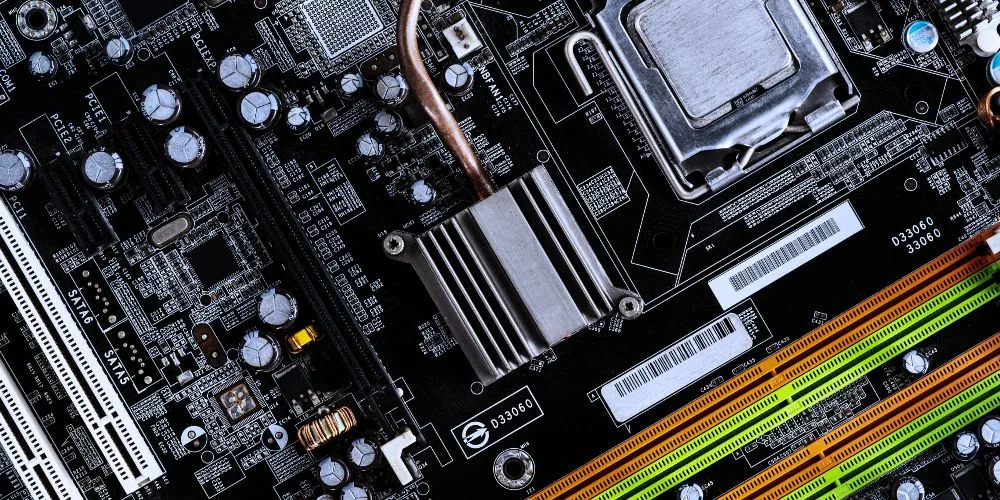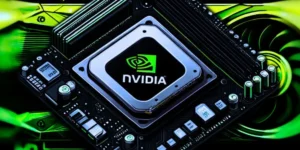The motherboard, often called a computer’s backbone or central hub, is a critical hardware component that interconnects all computing system parts. It ensures communication between the CPU, memory, storage, and other peripherals, enabling the computer to function as an integrated unit. This article explores the intricate details of motherboards, their architecture, types, and components, and their role in modern computing.
Understanding the Motherboard
The motherboard is more than just a circuit board; it is a foundational element of computer architecture.
What is a Motherboard?
A motherboard is a printed circuit board (PCB) that acts as the central platform for all components of a computer system. It houses the processor, RAM, storage devices, and various peripherals and provides pathways for communication between these components. Modern motherboards are designed to support various hardware configurations and functionalities, making them highly versatile.
The Importance of a Motherboard in a Computer
Without a motherboard, a computer cannot function. It provides the framework for assembling hardware components and ensures seamless interaction. A high-quality motherboard can enhance system performance, stability, and expandability, while a poorly designed one may limit these aspects. Thus, the motherboard is pivotal in determining a computer’s overall capabilities.
Evolution of Motherboard Technology
Motherboards have undergone significant transformations over the decades. Early motherboards were simple, offering minimal connectivity and features. However, technological advancements have led to developing sophisticated motherboards equipped with high-speed data transfer capabilities, integrated Wi-Fi, advanced power management, and support for cutting-edge components like NVMe SSDs and multi-core CPUs.
Components of a Motherboard
Motherboards comprise numerous components, each with a specific role in the system’s functionality.
CPU Socket
The CPU socket is where the processor is installed. It provides the electrical interface and mechanical support required for the CPU to function. Modern motherboards support various socket types, such as LGA (Land Grid Array), PGA (Pin Grid Array), and BGA (Ball Grid Array), depending on the processor’s design.
Chipset
The chipset acts as the motherboard’s control hub, managing communication between the CPU, RAM, storage, and peripherals. It is divided into two parts: the Northbridge and Southbridge. While the Northbridge handles high-speed operations like RAM and GPU communication, the Southbridge manages slower peripherals like USB and SATA.
RAM Slots
RAM slots, or DIMM slots, accommodate the system’s memory modules. The number of slots and the type of RAM (e.g., DDR3, DDR4, DDR5) supported by a motherboard determine the system’s maximum memory capacity and speed. Proper placement and compatibility are essential for optimal performance.
Types of Motherboards
Motherboards come in various types and sizes, each catering to specific use cases and requirements.
ATX (Advanced Technology Extended)
ATX is the most common motherboard form factor for desktop computers. It offers ample space for multiple expansion slots, ports, and connectors, making it suitable for gaming, productivity, and general-purpose systems. Its standardization ensures compatibility with a wide range of components.
Micro-ATX
Micro-ATX motherboards are smaller than ATX but retain much of their functionality. They are ideal for budget-conscious users and compact builds, as they typically feature fewer expansion slots and ports. Despite their reduced size, micro-ATX boards can support high-performance hardware.
Mini-ITX
Mini-ITX motherboards are designed for ultra-compact systems, such as home theater PCs (HTPCs) and small form factor builds. They prioritize space efficiency, often featuring only a single expansion slot. While limited in expansion capabilities, mini-ITX boards are energy-efficient and suitable for minimalist setups.
How a Motherboard Works
The motherboard is a central communication hub, coordinating data flow between components.
Data Transmission Paths
Motherboards transmit data between components using buses. These buses, such as PCIe, SATA, and USB, determine the speed and bandwidth of data transfer. Efficient data transmission ensures smooth system performance, whether loading applications, transferring files, or gaming.
Power Distribution
The motherboard distributes power from the power supply unit (PSU) to various components, ensuring stable and reliable operation. Voltage regulators and capacitors on the motherboard help maintain consistent power levels, protecting sensitive hardware from fluctuations.
BIOS/UEFI
The Basic Input/Output System (BIOS) or its modern counterpart, UEFI (Unified Extensible Firmware Interface), is embedded software stored on the motherboard. It initializes hardware during startup and provides an interface for configuring system settings, such as boot order and overclocking parameters.
Applications of Motherboards in Modern Technology
Motherboards are indispensable in diverse computing environments, from personal devices to enterprise systems.
Desktop Computers
In desktop computers, motherboards serve as the foundation for building versatile and powerful systems. They accommodate various components, allowing users to customize their builds for gaming, content creation, or general use.
Servers and Data Centers
Motherboards designed for servers and data centers are optimized for high reliability, scalability, and performance. They support multiple processors, large amounts of RAM, and advanced storage configurations, making them ideal for handling massive workloads and ensuring uptime.
Embedded Systems
In embedded systems, motherboards are compact and highly integrated, designed for specific applications like industrial automation, IoT devices, and medical equipment. Their robust designs ensure reliability in challenging environments.
Challenges and Innovations in Motherboard Technology
As technology advances, motherboard design faces new challenges and opportunities.
Heat Management
Modern motherboards must handle high-power components, such as multi-core CPUs and GPUs, which generate significant heat. Innovations like advanced heatsinks, thermal pads, and active cooling solutions help maintain optimal operating temperatures and prevent overheating.
Integration vs. Modular Design
Striking a balance between integration and modularity is a challenge in motherboard design. While integrated components, such as onboard Wi-Fi and audio, reduce the need for additional hardware, they can limit upgradability. Modular designs offer flexibility but may require more space and increase costs.
Future Trends in Motherboards
Emerging trends include support for PCIe 5.0, DDR5 RAM, and advanced networking features like 10Gb Ethernet and Wi-Fi 7. Additionally, AI-driven optimization and diagnostics are being incorporated into BIOS/UEFI to enhance user experience and system performance.
Conclusion
The motherboard is a critical component that underpins any computer system’s functionality. Its ability to connect and coordinate various hardware components ensures seamless operation, enabling users to harness the full potential of their systems. As technology continues to evolve, motherboards are becoming more advanced, efficient, and versatile, catering to the demands of modern computing. Understanding the intricacies of motherboards is essential for making informed decisions when building or upgrading a computer, ensuring optimal performance and reliability.










